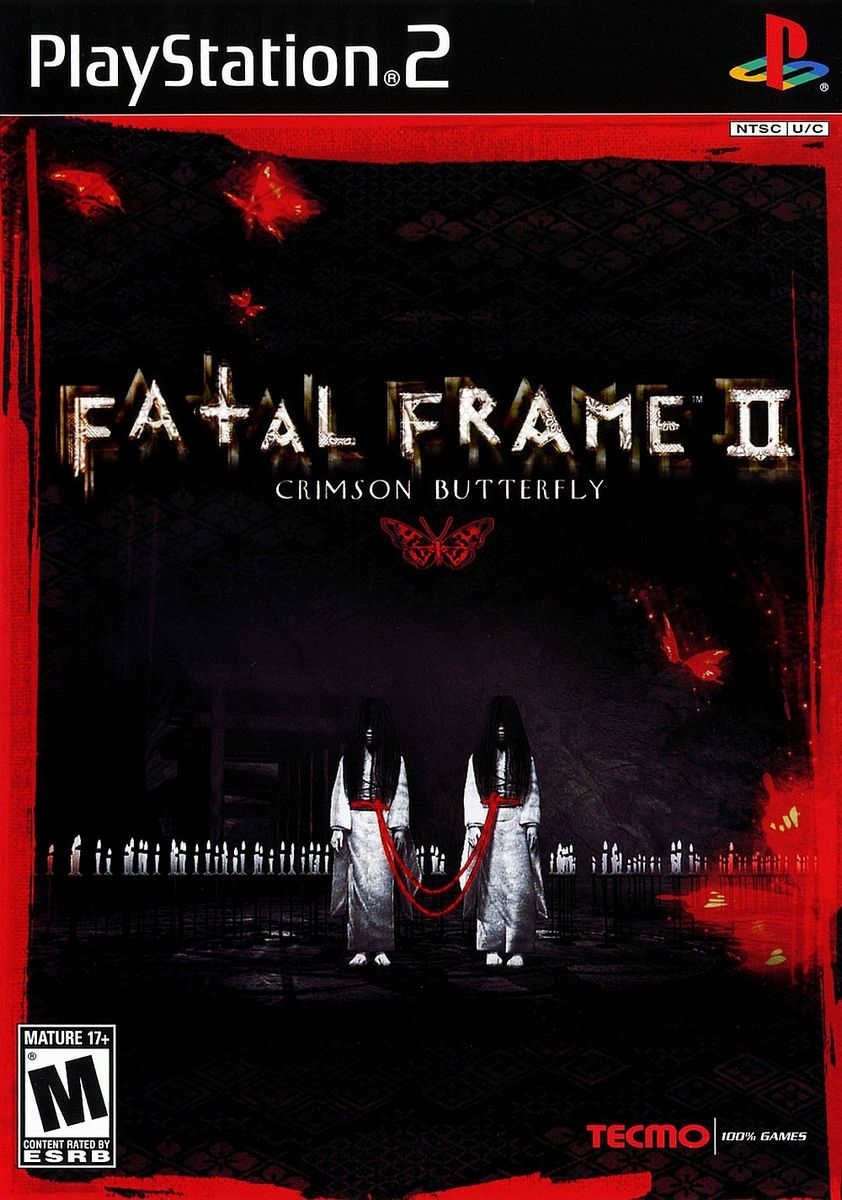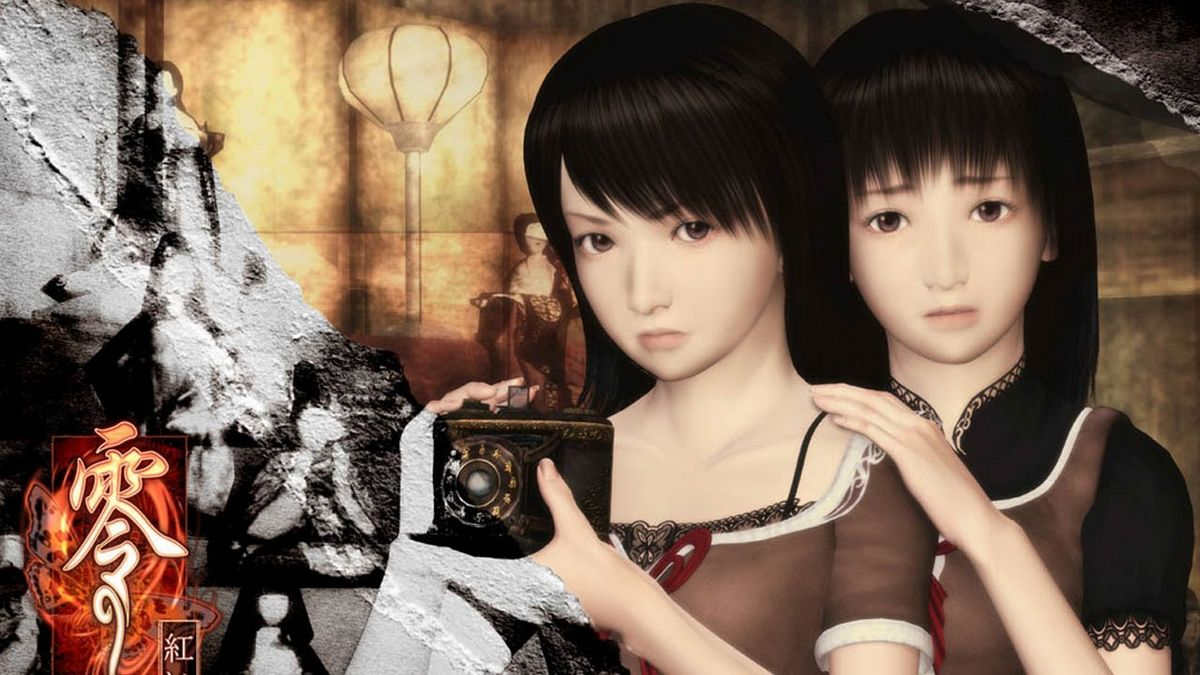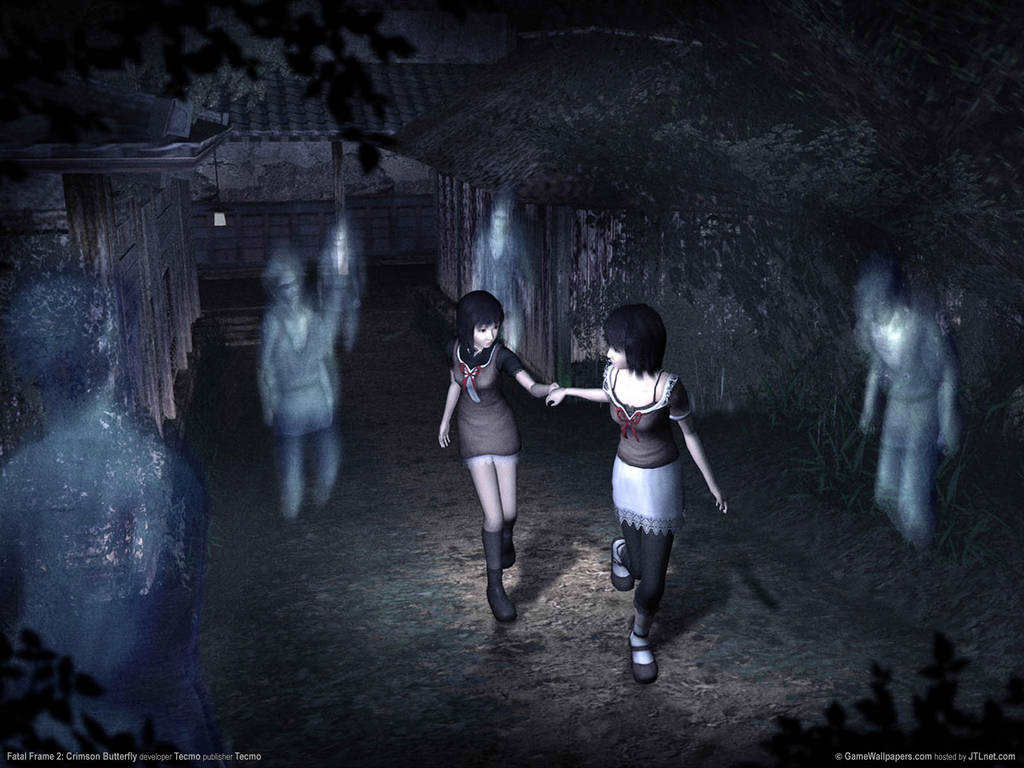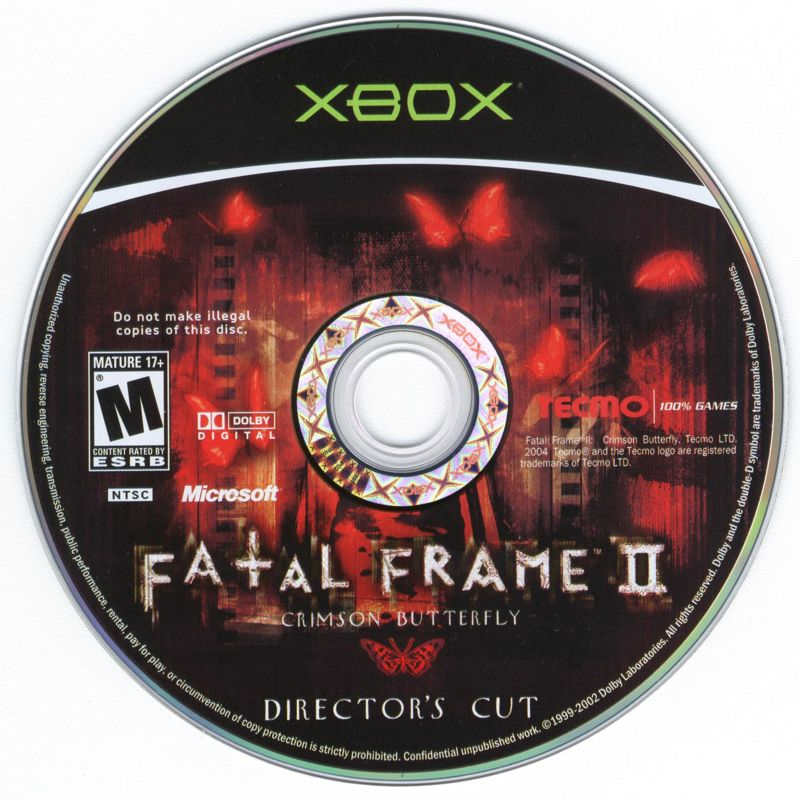The gaming industry has been evolving at an unprecedented rate, offering gamers a plethora of options to choose from. Among the many games that have made their mark in recent years is Fatal Frame II: Crimson Butterfly – a game that has captured the hearts and imaginations of horror enthusiasts worldwide. Developed by Tecmo for PlayStation 2, this survival horror masterpiece was released in 2003 and is still considered one of the most frightening games ever created. The game’s ambiance, eerie sound design, unique camera mechanics, and intense storyline make it an unforgettable experience for anyone who plays it. In this article, we will explore what makes Fatal Frame II such a standout title in its genre and why it continues to be relevant even after almost two decades since its initial release.
- The history and development of Fatal Frame II: Crimson Butterfly
- A detailed analysis of the game’s mechanics, including camera usage and ghost encounters
- The role of Japanese folklore in shaping the narrative and atmosphere of the game
- Examining how Fatal Frame II stands out among other horror games for its unique approach to player vulnerability
- An exploration into the symbolism and themes present within the game’s story, such as sisterhood, guilt, and loss
- The reception of Fatal Frame II upon release compared to its legacy in modern gaming culture
- The impact that Fatal Frame II had on horror gaming as a whole, both in Japan and internationally
- Drawing comparisons between Fatal Frame II and other notable works in horror media across various formats (e.g., film, literature)
The history and development of Fatal Frame II: Crimson Butterfly
It is the second installment in the Fatal Frame series, which revolves around a haunted camera that can exorcise spirits. The game takes place in an abandoned village in Japan, where twin sisters Mio and Mayu Amakura are trapped after following a mysterious crimson butterfly.
The history of Fatal Frame II: Crimson Butterfly traces back to its predecessor, Fatal Frame. The first game was released for PlayStation 2 in 2001 and received critical acclaim for its unique concept and terrifying atmosphere. Its success prompted Tecmo to develop a sequel with improved graphics, gameplay mechanics, and story.
Crimson Butterfly introduced several new features to the franchise, such as the ability to switch between two playable characters (Mio and Mayu) who have different strengths and weaknesses. It also refined the “Camera Obscura” system that allows players to capture ghosts using photographs taken with their virtual camera.
The development team drew inspiration from Japanese folklore such as Tsukumogami (animated objects), Yurei (ghosts), Onryō (vengeful spirits), and Shintoism rituals. They also conducted research on abandoned villages across Japan to create an authentic setting for the game’s narrative.
In conclusion, Fatal Frame II: Crimson Butterfly represents a significant milestone not only for Tecmo but also for survival horror games as it pushed boundaries regarding storytelling elements while maintaining its signature scares through immersive gameplay mechanics – creating one of gaming history’s most memorable experiences even today over many years since its launch.
A detailed analysis of the game’s mechanics, including camera usage and ghost encounters
This camera serves as both a weapon and tool for players to capture ghosts and unravel the story’s mysteries. The mechanics of this camera are crucial in battling the various ghost encounters throughout the game.
The Camera Obscura functions by using film rolls that can be upgraded or enhanced throughout gameplay. Players must use its viewfinder to focus on restless spirits, charging up energy over time resulting in more damage inflicted on each shot. Ghosts have different patterns, weaknesses, and strengths which players must learn to defeat them efficiently with minimal resources.
Additionally, the game also relies strictly on exploration-oriented gameplay mechanics; it forces players into exploring dark environments while solving puzzles and collecting clues regarding character’s past events. While doing so, they face different types of enemies who rely heavily on jump scares rather than direct combat giving an eerie feeling overall.
Finally, one standout feature of Fatal Frame II is how it delivers an immersive experience when it comes down to cameras’ usage during battles with ghosts; utilizing sound design (e.g., distant whispers) that adds depth to the overall atmosphere within these encounters making things even spookier!
The role of Japanese folklore in shaping the narrative and atmosphere of the game
The game is based on the concept of “tsukimono,” which is a Japanese term for spirits that are associated with death. These spirits are often portrayed as vengeful or malevolent, seeking to harm humans who have wronged them in some way.

The game’s setting, an abandoned village in Japan, also draws heavily from Japanese folklore. The village is said to be cursed by a powerful spirit known as “the Hellish Abyss,” which has caused many deaths and disappearances over the years. This concept draws from traditional beliefs about supernatural entities inhabiting certain places and causing misfortune to those who enter their territory.
Another element of Japanese folklore used in the game is that of yurei, or ghosts of people who died violent or tragic deaths. These ghosts are often depicted as having unfinished business or seeking revenge against those who wronged them in life. In Fatal Frame II: Crimson Butterfly, players must use a special camera called the Camera Obscura to capture images of these ghosts and banish them back into the afterlife.
Overall, these elements of Japanese folklore combine to create a haunting and atmospheric experience for players of Fatal Frame II: Crimson Butterfly. By drawing on traditional beliefs about supernatural entities and ghostly apparitions, the game creates an immersive world full of danger and mystery that keeps players engaged throughout its narrative arc.
Examining how Fatal Frame II stands out among other horror games for its unique approach to player vulnerability
Unlike most horror games, where players are given weapons or tools to fight against monsters and supernatural creatures, Fatal Frame II forces players into a state of helplessness by taking away any means of defense.
Players take on the role of two sisters who explore an abandoned village haunted by vengeful spirits. The only weapon at their disposal is a special camera that can capture these spirits and weaken them – but not kill them outright. This camera also serves as the primary tool for exploration, as it reveals hidden clues and secrets within the environment.
What sets Fatal Frame II apart from other horror games is how it constantly reinforces the idea that the player characters are vulnerable and powerless. The ghosts cannot be killed with conventional weapons or brute force; instead, players must rely on their wits and skill to survive encounters with these terrifying entities.
By emphasizing vulnerability over strength, Fatal Frame II creates a sense of fear and tension in which every encounter feels like a life-or-death situation. Players must constantly be on guard, scanning their surroundings for signs of danger while conserving limited resources like film for their camera.
In conclusion, Fatal Frame II’s unique approach to player vulnerability has made it one of the most memorable entries in the survival horror genre. Its emphasis on atmosphere, exploration, and resource management creates an immersive experience that keeps players engaged from start to finish. It proves that sometimes less is more when it comes to creating truly scary games – after all, what could be more frightening than feeling utterly helpless in a world full of malevolent spirits?
An exploration into the symbolism and themes present within the game’s story, such as sisterhood, guilt, and loss

The story follows the journey of twin sisters Mio and Mayu as they venture into an abandoned village in search of childhood memories. As they delve deeper into the village, they uncover dark secrets surrounding its history.
Sisterhood plays a significant role in Fatal Frame II’s story as it highlights the bond between Mio and Mayu. Despite their differences, the sisters rely on each other for support throughout their journey. However, their relationship is tested when Mayu becomes possessed by a malevolent spirit that threatens to tear them apart forever.
Guilt is another recurring theme present within Fatal Frame II’s narrative as both sisters grapple with feelings of responsibility over past events. The game utilizes flashbacks to showcase traumatic events from their childhood that continue to haunt them in adulthood. This sense of guilt drives Mio’s determination to save her sister at any cost.
Loss also features heavily within Fatal Frame II’s story as the siblings must confront death and sacrifice while navigating through the cursed village. Their journey towards understanding what occurred there ultimately leads them towards closure but not without having gone through great trauma.
In conclusion, Fatal Frame II: Crimson Butterfly offers players an immersive experience exploring complex themes such as sisterhood, guilt and loss against a backdrop of haunting Japanese folklore-inspired horror tropes which makes this one unforgettable game for many gamers around the world..
The reception of Fatal Frame II upon release compared to its legacy in modern gaming culture
The game’s immersive atmosphere and innovative use of a camera as the primary weapon resonated with gamers worldwide, cementing it as a cult classic. Its legacy has endured through re-releases on modern consoles and spin-off titles.
In modern gaming culture, Fatal Frame II is often regarded as one of the greatest horror games ever made, inspiring countless imitators to follow in its footsteps. Its influence can be seen in recent releases such as Until Dawn and Layers of Fear, which also rely heavily on creating an unnerving atmosphere while incorporating interactive elements that engage players on a deeper level than traditional jump scares or gore.
Despite its successes over the years, however, the franchise has struggled to maintain mainstream relevance due to limited availability outside of Japan and lackluster marketing efforts by developers. Nevertheless, devotees continue to praise Fatal Frame II for being ahead of its time and establishing many conventions that have become standard within the broader horror genre today.
The impact that Fatal Frame II had on horror gaming as a whole, both in Japan and internationally
The game’s unique narrative and gameplay mechanics have pushed the boundaries of what was previously thought possible in this genre. Perhaps its most significant impact has been in Japan, where it has become a cultural phenomenon that continues to influence Japanese media even today.
The game’s central mechanic revolves around using a camera to exorcise ghostly apparitions. This approach revolutionized horror gaming as it introduced players to new ways of interacting with their environment, making them feel like they were part of the action rather than just observers.
Moreover, Fatal Frame II’s success paved the way for other similarly themed games such as Silent Hill and Resident Evil. These games borrowed heavily from Fatal Frame II’s innovative gameplay mechanics and helped cement its place as one of the most influential games within the genre.

Overall, it can be said that Fatal Frame II: Crimson Butterfly had a massive impact on both horror gaming domestically and internationally. Its legacy lives on through subsequent titles within its franchise while also inspiring developers worldwide to create similar experiences for fans everywhere.
Drawing comparisons between Fatal Frame II and other notable works in horror media across various formats (e.g., film, literature)
This element is rarely explored in other notable works such as films and literature, which often rely on more traditional Western horror tropes. However, the game shares similarities with Guillermo del Toro’s film Pan’s Labyrinth in terms of their use of surrealism and fantastical elements to create an unsettling atmosphere.
One similarity between Fatal Frame II and classic horror literature such as Edgar Allan Poe’s works is their emphasis on psychological terror rather than physical violence. The game, like Poe’s stories, creates a sense of dread through character development and setting rather than relying solely on jump scares or gore. Additionally, both Fatal Frame II and Bram Stoker’s Dracula explore themes of loss and grief through haunting imagery.
Another work that draws comparisons with Fatal Frame II is H.P Lovecraft’s Cthulhu Mythos. Like Lovecraftian lore, the game explores ancient rituals, unknown creatures from beyond human comprehension, and existential terror through the perspective of ordinary people caught up in supernatural events beyond their control.
Overall, Fatal Frame II stands out among other notable works in horror media for its unique blend of Japanese folklore with psychological terror while sharing similarities with Gothic classics such as Poe’s tales; modern surrealist creations like del Toro’s Pan’s Labyrinth; Lovecraft’s cosmic horrors; or even contemporary adaptations like Jordan Peele’s Get Out.

In conclusion, Fatal Frame II: Crimson Butterfly is a masterful horror game that stands the test of time. Its innovative use of the camera as both a weapon and tool for exploration makes it stand out from other horror games in the genre. The game’s attention to detail and immersive storyline provide players with an unforgettable experience.
The psychological horror elements of the game are expertly crafted, leaving players feeling uneasy throughout their playthrough. The sound design and music add another layer of fear to the already chilling atmosphere.
Furthermore, Fatal Frame II explores themes such as loss, grief, guilt, and sisterhood which elevate its story above typical horror clichés. It delves into Japanese folklore and rituals which adds depth to its lore.
Overall, Fatal Frame II: Crimson Butterfly is a must-play for any fan of survival-horror games or anyone looking for a spine-chilling gaming experience. Its unique gameplay mechanics combined with its haunting story make it one of the most memorable games in video game history.
Read More:- Unmask the Terror: Discover the Haunting World of Fatal Frame – Mask of the Lunar Eclipse Game.
- Discover the Haunting World of Fatal Frame: Maiden of Black Water – A Chilling Gaming Experience!.
- Unleash Your Inner Wolf with Shaman King: Legacy of the Spirits' Sprinting Adventure.
- Experience the Thrill of Racing with Riding Spirits Game: A High-Octane Adventure!.
- Maximize Your Gaming Experience with Maximo: Ghosts to Glory – Dive into the Spooky World in PS2's Popular Game!.
- Discover the Epic Adventure of Arc the Lad: Twilight of the Spirits Game – Get Ready to Embark on a Thrilling Journey! (70 characters including spaces).
- Survive the Horror of Game NightCry: A Thrilling Interactive Experience.